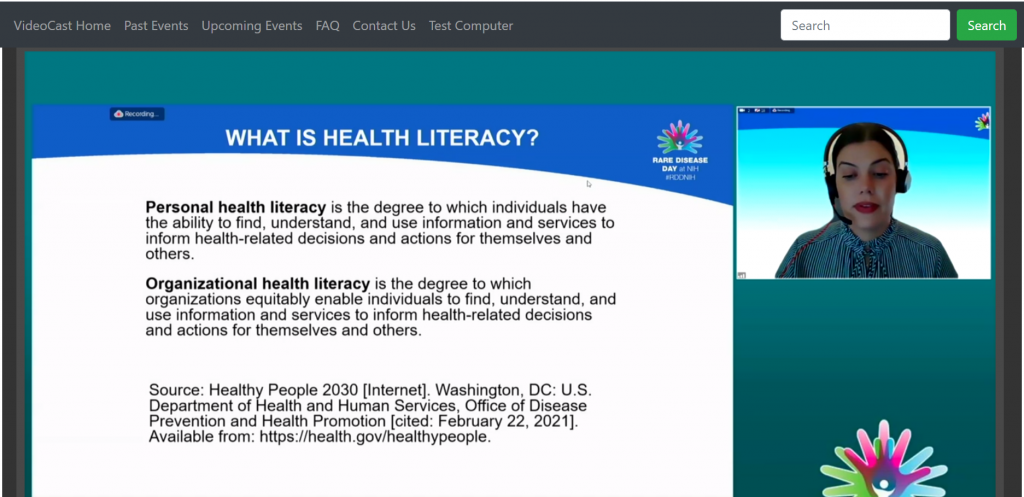National Center for Advancing Translational Science (NIH)
#RDDNIH
On March 1, 2021, I attended the virtual Rare Disease Day at NIH Conference where I was able to see how medical communicators can translate information into digital patient advocacy. This included patient stories, special topic discussions and more. Key spotlights looked over to Amyotrophic Lateral Sclerosis (ALS), which is also referred to as “Lou Gehrig’s disease, the National Center for Advancing Translational Sciences defines ALS as “… a progressive motor neuron disease which leads to problems with muscle control and movement. There are various types of ALS that are distinguished by symptoms and, in some cases, genetic cause. Early symptoms may include muscle twitching, cramping, stiffness, or weakness, slurred speech, and/or difficulty chewing or swallowing.” Another example looks over to Friedreich’s Ataxia, which is defined as “…an inherited condition that affects the nervous system and causes movement problems. People with this condition develop impaired muscle coordination that worsens over time. Other features include the gradual loss of strength and sensation in the arms and legs, muscle stiffness, and impaired speech’ and more” (NIH).
Below are three slides that resonate with my thesis on how medical communicators can help facilitate patient advocacy. The following discussions were lead by Christen Sandoval a Public Health Specialist and Eric W.K. Sid a Program Officer. They worked to define the terms of health literacy and how to translate language to patients and caregivers. This includes looking at patients emotions, experiences, decisions and expectations. The overarching goal is to be able to foster this information into a user-centered design approach.

In this slide the concept of health literacy is being defined by incorporating two different areas of interest: personal health literacy & organizational health literacy. In order to properly facilitate a medical communicator must understand the industries definitions and standards.

In the second slide the spotlight is looking over to how a medical communicator can translate patient/caregiver info needs and one major interest is looking over to “improving the usability of information.”

In this final slide we are looking at how medical communicators can translate this language for patients. It synthesizes genetics as emotions, symptoms as experiences, diagnosis as decisions, and treatments as expectations. In order to be successful in patient advocacy listening to their stories, needs, wants and desires is of top priority.